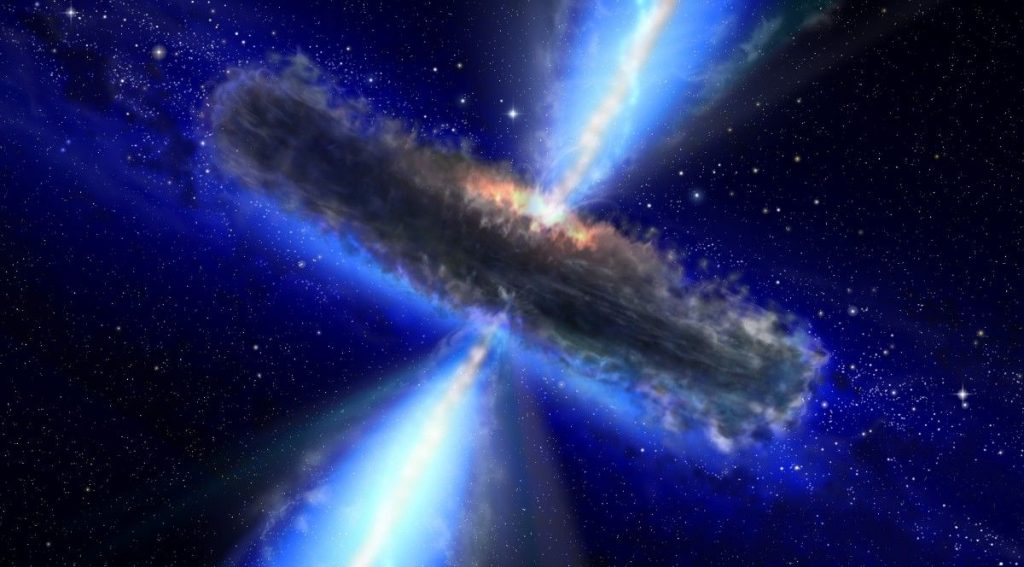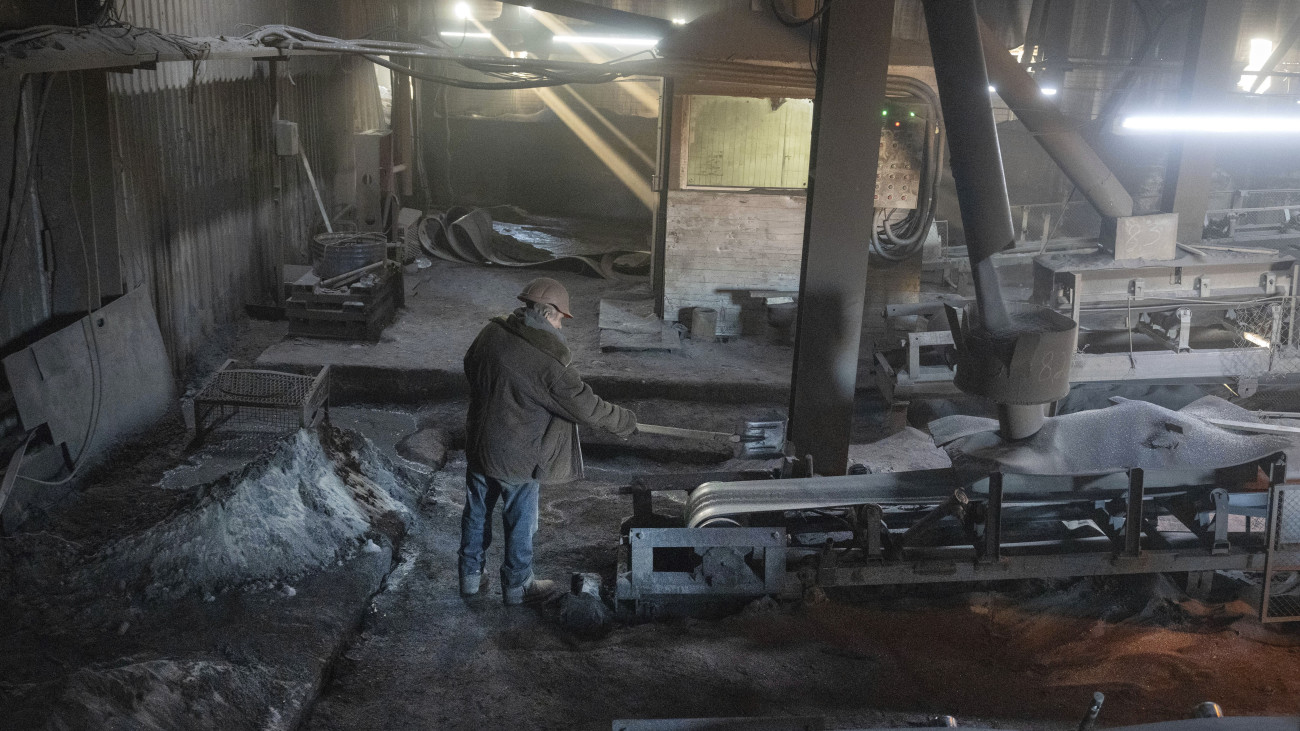Our story is about a black hole whose explosion released 100,000 trillion times more energy than our Sun over its entire lifetime, setting off a cascade of star formation.
Recently, a group of researchers observed one of the largest explosions ever produced by a black hole, a massive explosion that occurred 4 billion years ago, causing stars to form in its vicinity like a string and creating a celestial necklace of newly formed star clusters, sparkling in colorful light. .
This beautiful shape is located 3.8 billion light-years from Earth in a massive galaxy cluster of hundreds of galaxies called SDSS J1531. A large amount of hot gas has collected in this galaxy cluster, and in its center we can observe a very interesting event from the point of view of galaxy evolution, which is the merger of the two largest galaxies in the cluster. According to scientists, the observed explosion was likely caused by a massive black hole at the center of one of these colliding galaxies.
Based on the simulations, the observed S-shaped star formation region, which forms a supercluster of 19 giant star clusters, was created as a result of the collision of the two galaxies. Astronomers have used data covering all regions of the electromagnetic spectrum to study the star-forming region, from measurements from the Low Frequency Radio Telescope (LOFAR) to optical spectra to data from NASA's Chandra X-ray Observatory. By examining this specially shaped star-forming region, we can get a more complete picture of how supermassive black holes shape their environment.
“Black hole eruptions similar to those observed should play an important role in starting the star formation process and keeping the gas in the galaxy cluster hot,” said Timothy Davis, a member of the research team. “The fact that we have now found clear evidence of the process that initiates star formation by detecting the explosion contributes significantly to understanding the role of massive black holes in shaping the environment.”
Active galactic nuclei and star formation
At the center of most galaxies is a black hole with a mass millions to billions of times the mass of our Sun. Among them, there are black holes, such as Sagittarius A* at the center of our galaxy, the Milky Way, that are “silent”, in other words, starving, while there are also those that show activity by accumulating gas and dust around them. (In astronomy, accretion means picking up mass.) The black holes at the center of galaxies belonging to the latter group are called active galactic nuclei (AGN), and their distinguishing feature is that they are surrounded by a thick accretion disk composed of gas and dust. The black hole “feeds” on the disk material surrounding it through various collective capture processes. As a result of these processes, the black hole environment emits radiation that can also be detected in the visible range.
In addition, matter that does not fall directly on the surface of the black hole is directed by the magnetic field towards the poles of the black hole, from which the charged particles accelerate to relativistic speed and leave the poles of the black hole as jets. . This eruption is often characterized by optical phenomena that are observed in all bands of the electromagnetic spectrum. For this reason, active galactic nuclei can outshine the entire luminosity of their host galaxy.

According to the researchers, the black hole of one of the galaxies located at the center of the galaxy cluster SDSS J1531 issued a jet beam as a result of the processes described above, which pushed the hot gas jet away from the vicinity of the black hole. Thus, a cavity free of hot gases was created around the black hole.
“The data we are examining dates back to 4 billion years ago, roughly from the time the Earth was formed,” said Osas Omoruyi, head of the research team. “The ancient void around the black hole may tell the story of the cluster’s past life.”
These events were detected by the Chandra Space Telescope by Omorui and colleagues, who modeled the motion of dense gas at the center of the galaxy cluster SDSS J1531, and showed that the edge of the cavity created by the jet radiates in the X-ray range. With the help of LOFAR radio telescope data, particles from the central black hole's ejection were detected, which is direct evidence of the black hole's previous eruption.
Davis, who participated in the research, said: “It is certain that the black hole at the center of the system is active and has erupted several times throughout its history, which greatly affected the location, movement and physical properties of the gas surrounding it.” “What's special about this case is that we can simultaneously examine the eruption event and its immediate consequences.”
According to Omorui, the stream of radiation emanating from the poles of the black hole is one of the largest jets of energy released: the explosion released 100,000 trillion times more energy than our Sun emits during its entire lifetime.
Since then, the hot gas pushed by the jets from the vicinity of the black hole has cooled, mixed with the surrounding matter, and then began to approach the black hole again under the influence of gravity, creating the possibility of a chain-like appearance. Formation of new stars.
According to the head of the research, the discovery of the high-energy jets is a surprising result in itself, but the fact that the nearby star cluster remained in equilibrium even after the explosion is even more striking. By studying this case, we can understand a lot about the relationship between black holes and the star formation process.
Although current research also provides plenty of evidence for a black hole explosion, detecting a jet exiting the black hole in the opposite direction would be more mysterious. However, this is the music of the future.
The research team published the results presented here in the Astrophysical Journal.
Article source: https://www.space.com/black-hole-powerful-eruption-string-star-cluster-jewelry
comment












































